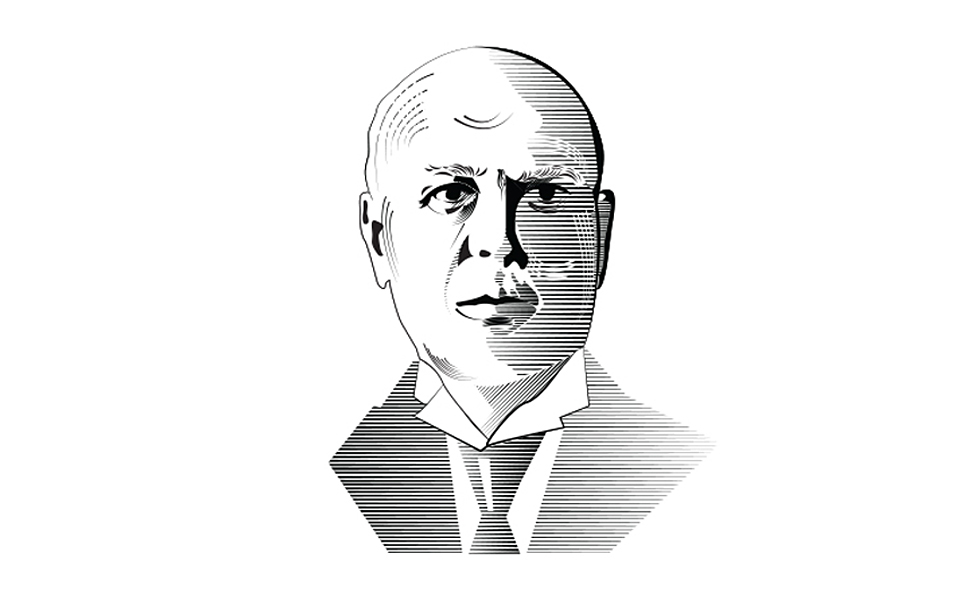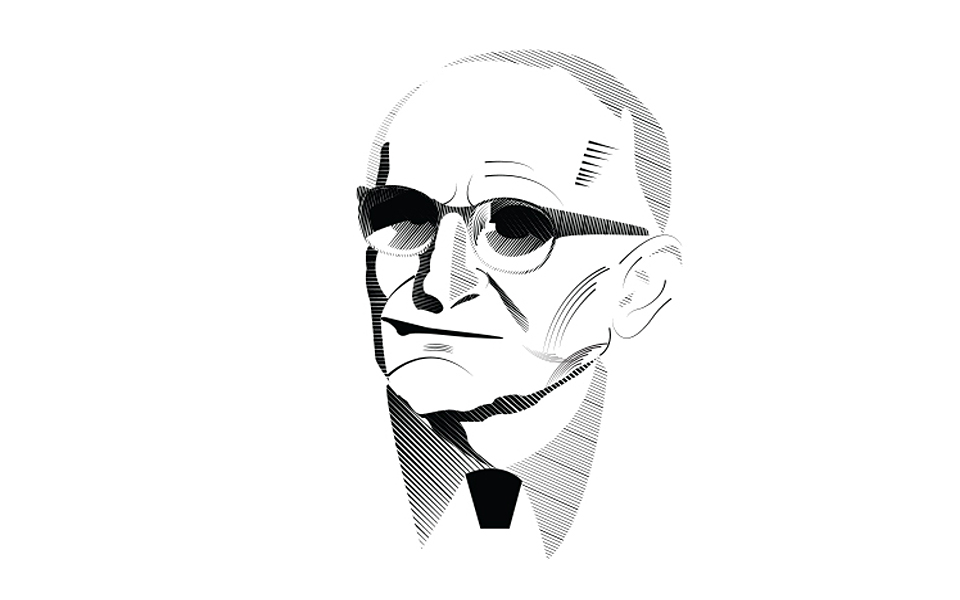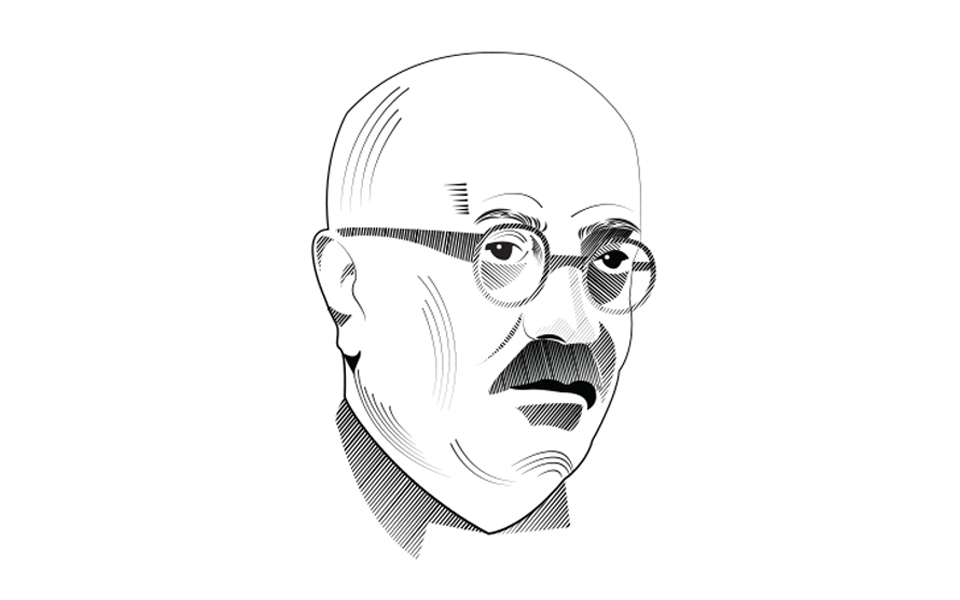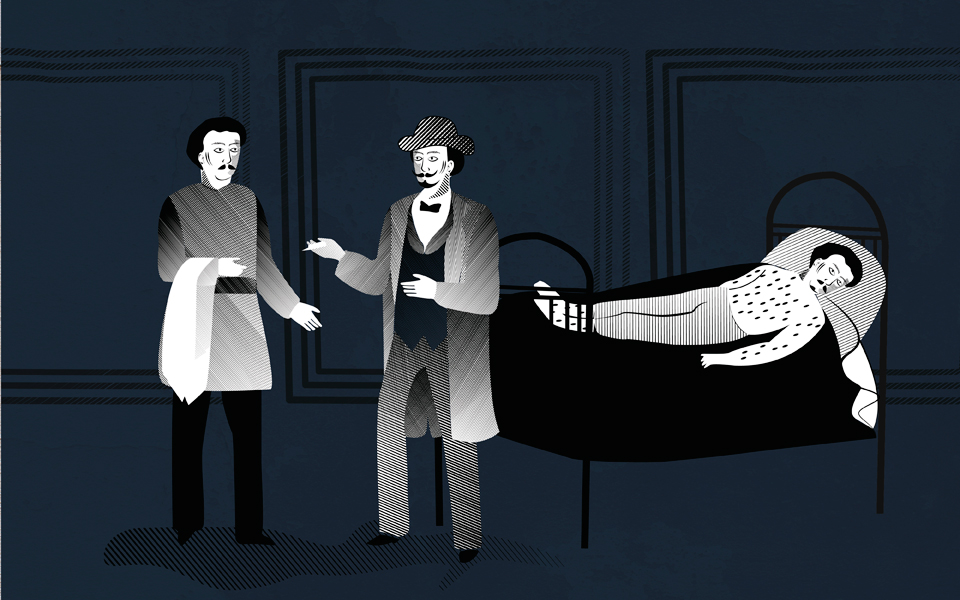Iakovos Pylarinos (1659-1718) and Emmanuel Timonis (1669-1741): The inventors of inoculation
Pylarinos and Timonis were members of the Greek diaspora, which by virtue of its links with western Europe is credited with bringing an ‘early Enlightenment’ to the Ottoman-dominated territories of southeastern Europe. They pioneered the first clinically tested form of inoculation against smallpox, an acute contagious disease responsible for hundreds of thousands of deaths in epidemics worldwide.
Pylarinos was born on the island of Cephallonia. He studied medicine in Padua, and served as the chief physician in the court of the rulers of the principality of Wallachia. During his time there, the capital of Wallachia, Bucharest, became a centre for medical learning. Pylarinos also served as a physician in the court of Czar Peter the Great and in the Venetian fleet of Morosini, and was appointed Venetian consul to Smyrna in 1708.
His slightly younger contemporary Emmanuel Timonis studied medicine and taught in Padua, and by 1703 he had received a doctorate from Oxford University and was elected a fellow of the Royal Society. He served as the doctor of the royal family of Moldavia between 1680-1700.
Both doctors published their findings on smallpox in the same volume of the Philosophical Transactions of the Royal Society in London (1714-1716). They each independently drew on field observations of traditional medical practice in eastern Europe and Asia, where the use of a primitive form of smallpox inoculation was widespread among folk practitioners. Pylarinos learned the technique of ‘transplantation’ from a woman in Thessaly who is said to have inoculated 40,000 people, while Timonis had seen it practiced in Constantinople. Around the same time, Lady Mary Wortley Mogntagu, the wife of the British Ambassador in Constantinople, became a strong advocate for the practice in Britain. She was convinced of its success after having her own family inoculated to prevent them contracting the disease that had scarred her for life.
The technique, which came to be known as ‘variolation’, involved rubbing material from the scabs and pustules of smallpox patients into incisions made in the skin of healthy individuals. This would infect the person with a milder version of smallpox, which would prevent them from contracting a fatal infection. The doctors observed that using this technique systematically resulted in fewer deaths from smallpox in the population at large. This observation formed the basis for the now widely-accepted principle of vaccination. Lady Mary persuaded the British royal family to have all their children variolated in 1722, but the practice was not without risk and remained somewhat controversial. Several decades later, the English physician Edward Jenner found by observing workers in dairy barns that the animal disease cowpox provided an even stronger safeguard against smallpox, and became widely credited with the invention of the modern cowpox-based vaccine. According to the World Health Organisation, smallpox was officially eradicated in 1980.

© Illustration by Philippos Avramides
Alexios Trantas (1867-1961): The father of the gonioscopy
Alexios Trantas is best known for devising the gonioscopy. The gonioscopy is an eye examination technique for looking at the front part of the eye (anterior chamber) between the cornea and the iris. The examination, which is painless, is used to see whether the area where fluid drains out of the eye (called the drainage angle) is open or closed. Trantas named the procedure after the Greek words for “angle” (gonia) and “observe” (skopein). Today, the gonioscopy, using slightly improved methods, is used as the main way to diagnose glaucoma. Augmented with modern laser technology, it is also the basis of non-invasive surgical treatment for the condition.
Trantas was born in 1867 in Epirus and studied medicine in Athens, before specializing in ophthalmology in Paris. After completing his studies he moved to Constantinople, where he remained until 1922. In 1894 he established an ophthalmological clinic at the Greek hospital of Saint George in Constantinople. He also established the first special clinic for trachoma in the city, the ‘Skouloudeion Ophthalmiatreion’. From 1924 he served as chief ophthalmologist at the Therapeutrion of St Spyridion in Piraeus. He died at an advanced age in 1961.
Trantas also made a fundamental contribution to the clinical definition and treatment of trachoma, a bacterial infection that can cause blindness if untreated. Trachoma is the leading infectious cause of blindness worldwide. In 1899 he described the small chalky concretions around the limbus, which are key to the diagnosis of vernal keratoconjunctivitis, or spring catarrh. To commemorate his contribution, these are known in the medical literature as Horner-Trantas dots.

© Illustration by Philippos Avramides
Benediktos Adamantiadis (1875-1962): A worthy successor of Hippocrates
Benediktos Adamantiadis was the first in modern times to describe a multi-system inflammatory disorder, which is now known as Adamantiadis-Behcet Syndrome. The cluster of symptoms, affecting several organs at the same time, is thought to have been first recognised by Hippocrates.
Adamantiadis was born in Prousa (Bursa) by the Black Sea, the son of a teacher. He graduated from the Greek Orthodox Illustrious School of the Nation in Constantinople, and went on to study medicine in Athens. After specializing in ophthalmology in Paris, he returned to Prousa. He was a pillar of the Greek Orthodox community, but was forced to move to Athens when the Greek populations were expelled from Asia Minor in 1922. He served as the director of the Ophthalmology Department of the Refugee Hospital of Athens (now the Hippocration), and was one of the founding members of the Greek Ophthalmological Society. His adopted daughter, Eugenia Rangavi, was the first female ophthalmologist in Greece.
In a landmark paper published in 1930 in the French journal Annales d’Oculistique he described a patient who suffered bouts of inflammation of the eye (iriditis), combined with genital ulcers and arthritis. Adamantiadis noted that these diverse symptoms reappeared together, suggesting that they were part of a single disease, the cause of which was unclear. In 1946 he updated his findings, adding thrombophlebitis to the symptoms of the disease. Adamantiadis shares the credit for discovering the disease with Hulusi Behcet, who published similar observations independently around the same time.
Demetrios Chilaiditis (1883-?): X-ray pioneer
Demetrios Chilaiditis was an early pioneer of radiology, best known for description of an abnormality of the bowel known as Chilaiditi’s syndrome. He was born in Vienna, and studied medicine there. From 1910 onwards, he served as chief radiologist in the British Hospital in Constantinople, and as a consultant radiologist in the French, Greek and Italian hospitals in the city.
While still in Vienna, in 1910, he first described the disease that now bears his name in a paper published in the German radiology journal Fortschritte auf dem Gebiete der Röntgenstrahlen. Chilaiditi’s syndrome, or colonic interposition, is a rare condition in which a portion of the colon is abnormally located (interposed) between the liver and the diaphragm. Diagnosis of Chilaiditi’s syndrome relies upon imaging techniques that Chilaiditis pioneered. Such imaging techniques may today include chest and abdominal x- rays, ultrasounds, or computerized tomography (CT) scanning.

© Illustration by Philippos Avramides
John (Ioannis) Lykoudis (1910-1980): First to discover the cause of peptic ulcers
In 2005 the Nobel Prize for Medicine was awarded to two Australian researchers, John Robin Warren and Barry Marshall, for demonstrating that peptic ulcers are caused by the Helicobacter pylori bacterium. It is less well known that the bacterial cause of ulcers was discovered several decades earlier by a Greek provincial doctor, John (Ioannis) Lykoudis.
Lykoudis was born in the Greek town of Messolonghi in 1910, the third of four children in a poor farming family. Orphaned at an early age, he worked in a tobacco factory and a cobbler’s shop while attending night school. He distinguished himself enough academically to gain a place at the Army Medical School. After being discharged from the army with tuberculosis, he returned to Messolonghi to practice medicine. He became known as a doctor of the poor, to whom he provided free treatment. He was much loved in the city and was twice elected mayor, donating his salary to buy medications for the indigent.
Lykoudis made his discovery about the cause of ulcers in 1958 when he tried treating himself for a bleeding ulcer with antibiotics. He noticed that the bleeding stopped, while the symptoms eased over time, which led him to conclude that the ulcer was caused by a microbe that had been killed by the antibiotic. In the beginning, Lykoudis treated himself with a combination of antibiotics and vitamin A, which he produced himself. By 1961, his treatment had received a small following, and he started manufacturing his self-devised medication on a small scale, under the name ‘Elgaco’. Despite empirical success, he encountered strong resistance from the medical establishment, as his theory went against the accepted notion at the time that ulcers were caused by stress and rich diet. He failed to gain support for scaling up production of ‘Elgaco’, or to get his findings published in the Journal of the American Medical Association. The archives preserved by his son show that he treated over 50,000 people in the course his career.
After winning the Nobel Prize for providing scientific confirmation of Lykoudis’s insight, Barry Marshall acknowledged his contribution by including him in his book Helicobacter Pioneers.

© Illustration by Philippos Avramides
George (Georgios) Joachimoglu (1887-1979):
Founder of experimental pharmacology
Like his ancient compatriot Galen, Georgios Joachimoglu created a formidable body of research, and left a pioneering legacy in the field of pharmacology. Joachimoglu focused specifically on the subjects of drug addiction, carcinogenic substances in air pollution, and the harmful effects of chemical colorants in food.
Joachimoglu was born in the town of Koula in Asia Minor (modern Turkey), the son of a wealthy merchant family. After graduating from the Evangelical School of Smyrna he studied medicine, and later chemistry, in Berlin, where he worked as an assistant to several prominent scientists of the time, including Nobel-winning chemist Emil Fischer. In 1920 he returned to the city of his birth, where he helped to establish the Chair of Hygiene and Microbiology at the Greek University of Smyrna. His efforts were cut short in 1922, when he was expelled along with the rest of the Greek population, and resettled in Athens. Here, he was appointed the Chair of Experimental Pharmacology in the Medical School. He was made a lifetime member of the Athens Academy in 1929, and elected President of the Supreme Health Council of Greece in 1935, a position he held for 20 years. During WWII he established the first blood bank in Greece.
Joachimoglu’s main contribution was to study the addictive properties of narcotics such as cannabis, from a pharmacological as well as a social perspective. He was one of the first to warn of the dangerous implications of widespread drug addiction for society, as early as 1929. His contribution in this area was recognized when he was invited to become a member of the Permanent Central Narcotics Board of the World Health Organisation and President of the Drug Supervisory Body of the United Nations. In the 1960s he produced some of the earliest research on the carcinogenic effects of car exhaust fumes. He was also one of the first to point to the harmful effects of certain synthetic food colorants. He vocally opposed their importation of eighteen such substances into Greece, at a time when they were still considered harmless in the United States. Many of these were later conclusively proved to cause cancer.
Joachimoglu was remembered as a very erudite man with a dry sense of humor. His research included detailed discussions of the evidence for the consumption of cannabis by the Scythians gleaned from Herodotus, as well as the Minoans’ use of the opium poppy, based on his study of the Homeric poems.

© Illustration by Philippos Avramides
George (Georgios) Constantin Cotzias (1918-1977):
The ‘sacred beast’ of neurophysiology
One of the great twentieth century advances in our understanding of brain function has been the explanation of the role of certain chemicals known as ‘neurotransmitters’ in passing signals to and from the brain. A Greek neurologist named George Cotzias was hugely influential in this area. His most notable contribution was to explain the biological causes of Parkinson’s disease, which was an essential step towards developing a treatment for the condition.
Cotzias was born in Chania on the island of Crete in 1918. He came from a prominent family, and his father had served twice as mayor of Athens. He started his studies at the University of Athens Medical School, but interrupted them when he fled with his father to the United States to escape the German occupation of Athens in 1941. He struggled to get accepted into a U.S. medical school to continue his studies, but was eventually offered a place at Harvard Medical School, from where he graduated cum laude in two years. After completing his training in medicine and neurology, he went on to work at the Rockefeller Institute for Medical Research and at the Brookhaven National Laboratory, where he carried out much of his groundbreaking research. He has been awarded a total of 22 prizes, making him the most honored Greek researcher of the twentieth century alongside George Papanikolaou (inventor of the Pap test).
In his research, Cotzias worked on the role of trace elements and amino acids in normal brain function, and the consequences of chemical imbalances for various neurological conditions. He was one of a team researching the relationship between the naturally occurring chemicals dopamine and melanin, and the symptoms of Parkinson’s disease. His critical contribution was to develop a safe method of administering dopamine in the form of its active isomer L-dopa. L-dopa stimulates the generation of melanin in the brain, which alleviates the movement disorders associated with Parkinson’s disease. Along the way, Cotzias also helped to advance the scientific understanding of the role played by manganese, zinc and cadmium in the nervous system, and was one of the pioneers of the use of radioisotopes in clinical medicine.
In addition to his scientific legacy, Cotzias will be remembered as a great humanist with a deep empathy for his patients, and a strong believer in the healing power of hope and faith. Sadly, he was also a dedicated smoker and died of lung cancer at the age of 59.
*[Adapted from “8 Greek scientists who changed the course of medicine” by Elena Kiourktsi, with Constantinos Trompoukis, Assistant Professor, History of Medicine, University of Crete. • Dimitrios Linos, M.D., Ph.D. | Professor of Surgery, National and Kapodistrian University, Athens Medical School President, International Association of Endocrine Surgeons Governor, American College of Surgeons / Greek Chapter]










